Navigating the intricate web of interconnected stories in Ursula K. Le Guin’s Hainish Cycle can be a complex endeavor for new and seasoned readers alike. This legendary science fiction series is not only known for its vivid worlds and compelling characters but also its intricate storytelling.
If you’re looking to immerse yourself in the Hainish universe, having a clear roadmap is invaluable. In this blog post, we’ll provide a simple, easy-to-follow reading guide, so you can dive straight into the thought-provoking themes and intriguing narrative that make the Hainish Cycle an unforgettable reading experience.
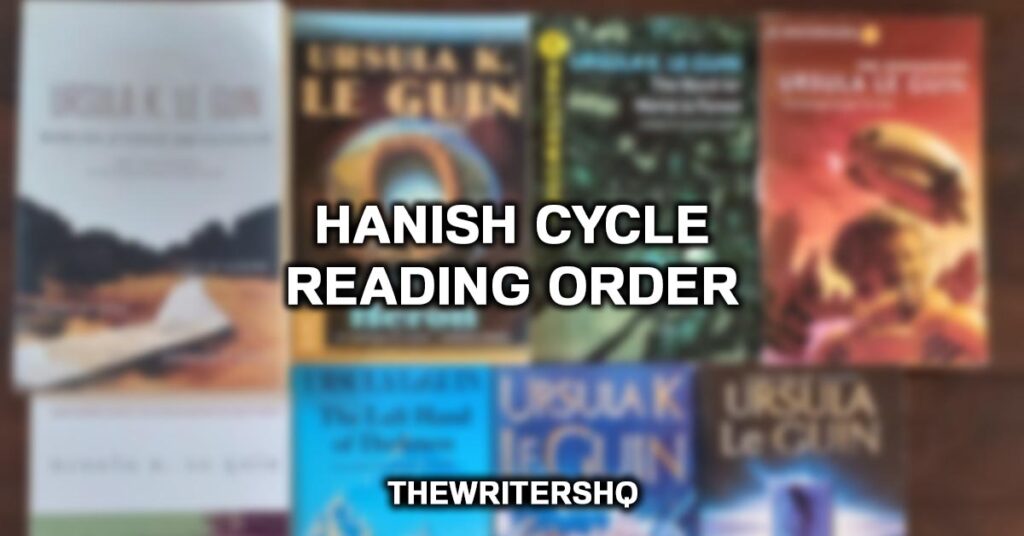
Hainish Cycle Reading Order (Quick List)
While you can read most of the Hainish novels and stories as standalone works, following a suggested order can deepen your understanding and enjoyment. Here’s a quick list to guide you:
- Rocannon’s World (1966)
- Planet of Exile (1966)
- City of Illusions (1967)
- The Left Hand of Darkness (1969)
- The Dispossessed (1974)
- The Word for World is Forest (1976)
- Four Ways to Forgiveness (1995) – A collection of interconnected novellas.
- The Telling (2000)
Optional Short Stories
- The Rule of Names (1964)
- Winter’s King (1969)
- Vaster than Empires and More Slow (1971)
Expert Tip: Keep in mind that Ursula K. Le Guin often revisited and revised her works, so newer editions might contain additional stories or supplemental material.
Armed with this list, you are well-prepared to embark on a journey through one of science fiction’s most enchanting and intellectually stimulating universes. Happy reading!
What Order Should I Read Ursula Le Guin Books?
Ursula K. Le Guin was a prolific author who wrote in various genres, but if you’re focusing on her Hainish Cycle, the reading order listed in the blog post above is a solid place to start. If you’re interested in her other works, such as the “Earthsea” series, you may want to tackle them separately:
- Earthsea Series Reading Order
- A Wizard of Earthsea (1968)
- The Tombs of Atuan (1971)
- The Farthest Shore (1972)
- Tehanu (1990)
- The Other Wind (2001)
- Tales from Earthsea (2001) – A collection of short stories.
After you’ve dived into both the Hainish Cycle and the Earthsea series, you might also explore her standalone novels, short story collections, and essays. They are highly regarded and cover various genres and themes.
Who Is the Author of the Hainish Cycle Series?
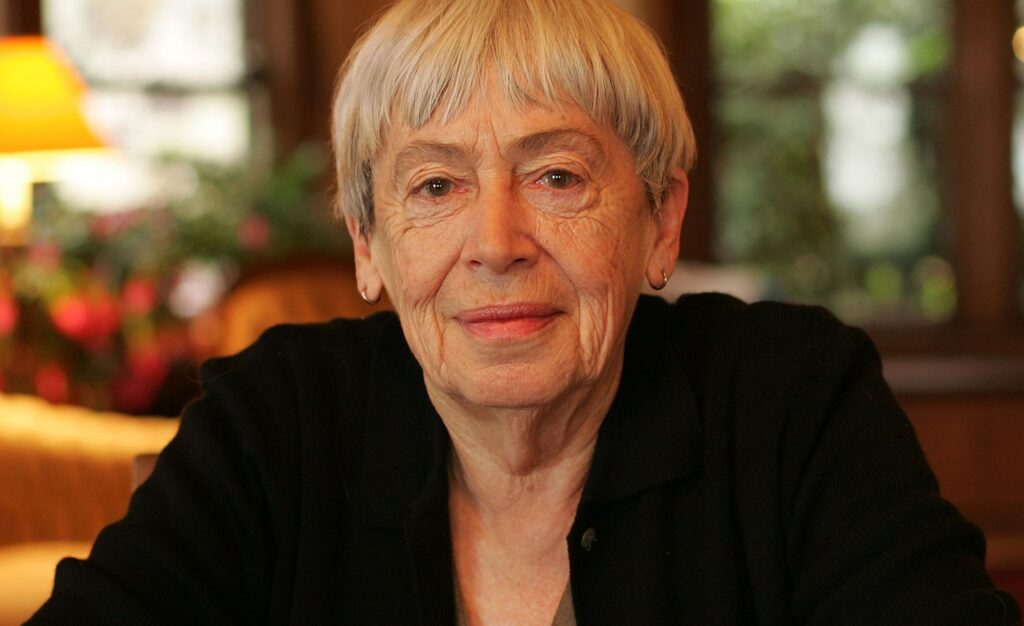
The author of the Hainish Cycle series is Ursula K. Le Guin, an iconic American writer known for her works in science fiction and fantasy. She was born in 1929 and passed away in 2018. Le Guin was a groundbreaking female author in the science fiction genre and received numerous awards, including the Hugo, Nebula, and Locus Awards.
How Many Hainish Cycle Books Are There?
The Hainish Cycle consists of seven novels and several short stories. Some of these works have been compiled into anthologies, and they can often be found in “The Hainish Novels & Stories,” a boxed set or a single-volume edition.
Here’s a quick refresher on the list of Hainish Cycle novels:
- Rocannon’s World (1966)
- Planet of Exile (1966)
- City of Illusions (1967)
- The Left Hand of Darkness (1969)
- The Dispossessed (1974)
- The Word for World is Forest (1976)
- The Telling (2000)
There are also several shorter works related to the Hainish Cycle, such as The Rule of Names (1964), Winter’s King (1969), and Vaster than Empires and More Slow (1971).
Summary of all the books:
1. Rocannon’s World (1966)
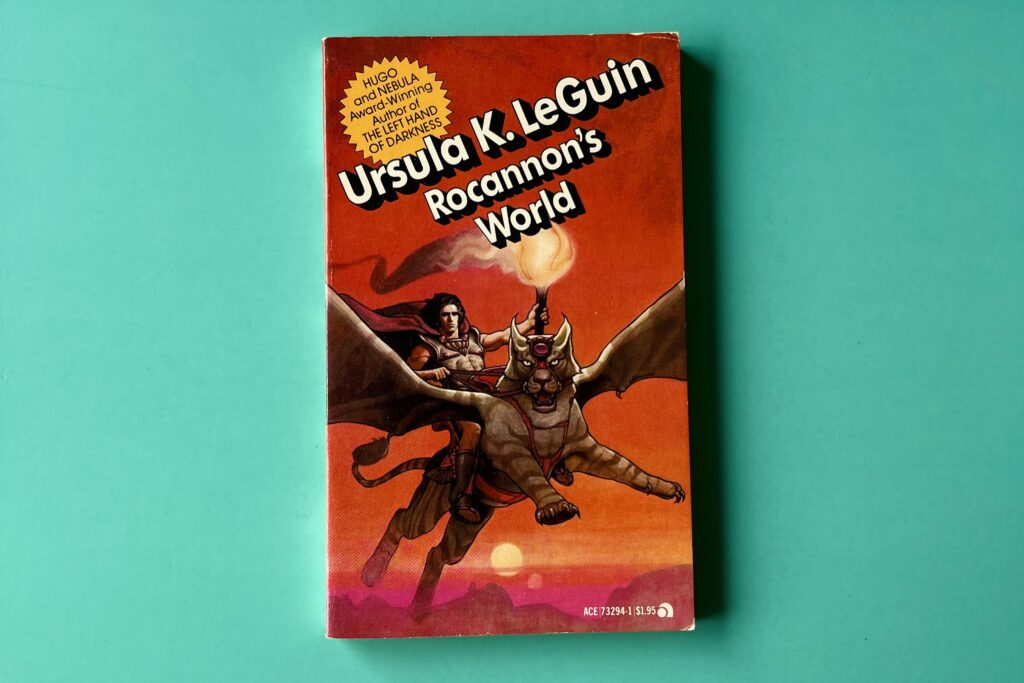
In “Rocannon’s World,” we meet Rocannon, an ethnologist from the League of All Worlds who finds himself stranded on a planet after his team is killed in an attack by a rogue civilization. The novel is a mix of science fiction and fantasy, filled with various species and mythological elements.
Rocannon joins forces with the native peoples to embark on a quest to find a mysterious weapon that could help him save the planet from the enemy’s domination.
Quick Fact: The book serves as an introduction to the Hainish universe, exploring themes of cultural relativity and the complexities of communication.
2. Planet of Exile (1966)
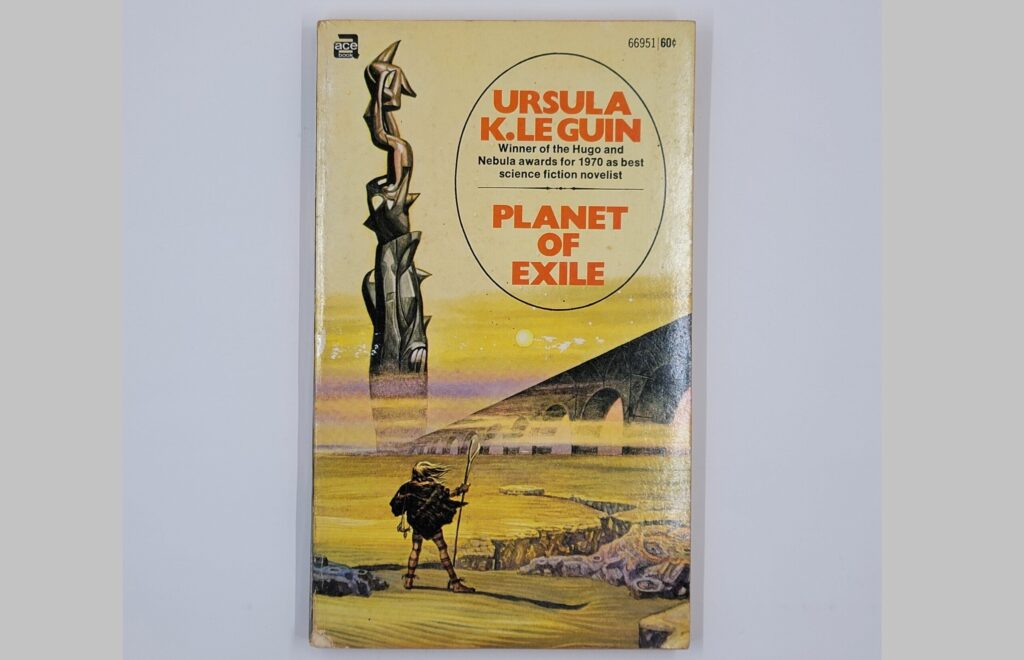
“Planet of Exile” is set in the world of Werel, a planet with incredibly long seasons. The story follows two distinct cultures: the humanoid Tevarans and the human colonists known as the Alterrans.
As the long winter approaches, the two communities, once mistrustful of each other, find themselves having to cooperate to survive against a common enemy the predatory creatures known as the Gaal. The novel delves into the themes of cultural exchange, mutual dependence, and the blurring of alienness when faced with shared challenges.
3. City of Illusions (1967)
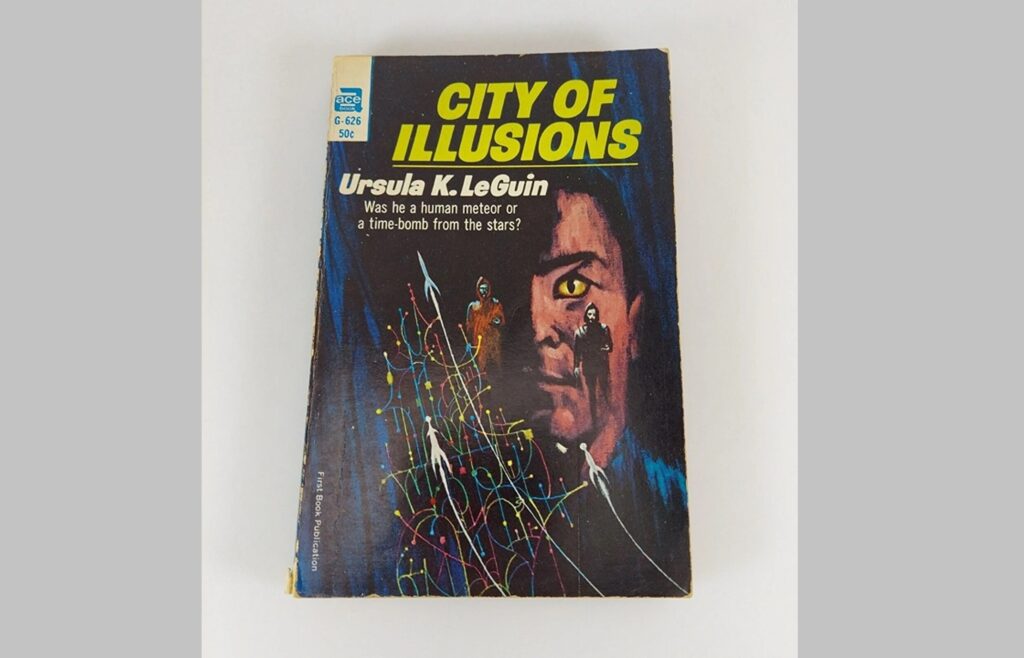
In “City of Illusions,” we find ourselves back in the League of All Worlds but in a far more sinister setting. A man named Falk, who has lost his memory, wakes up in a forest and embarks on a journey to the Shing-held city of Es Toch to reclaim his identity. The Shing have conquered Earth and maintained control through lies and illusion.
Falk has to navigate a landscape full of manipulations and betrayals as he strives to defeat the Shing and restore the League. The book explores themes of identity, deception, and the struggle between individuality and conformity.
Each of these books is a self-contained story but contributes to the larger universe and themes that Le Guin skillfully weaves throughout the Hainish Cycle. They are excellent starting points for diving into the ethical questions and sociopolitical structures that Le Guin examines in her works.
4. The Left Hand of Darkness (1969)
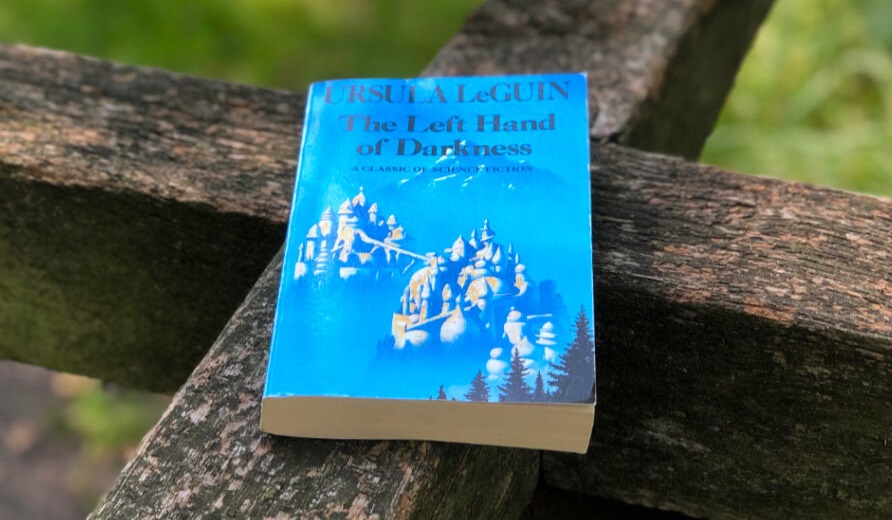
This groundbreaking novel is often cited as one of Le Guin’s masterpieces and is set on the icy planet of Gethen. The story follows Genly Ai, a human envoy sent to persuade the planet’s inhabitants to join the Ekumen, an interstellar collective. Gethenians are ambisexual, taking on male or female roles only once a month during the “kemmer” phase.
The book delves deeply into themes of gender, friendship, and political intrigue. Genly Ai must navigate a complex social landscape while trying to understand a culture utterly foreign to him. The novel won both the Hugo and Nebula awards and remains a cornerstone of feminist science fiction.
5. The Dispossessed (1974)
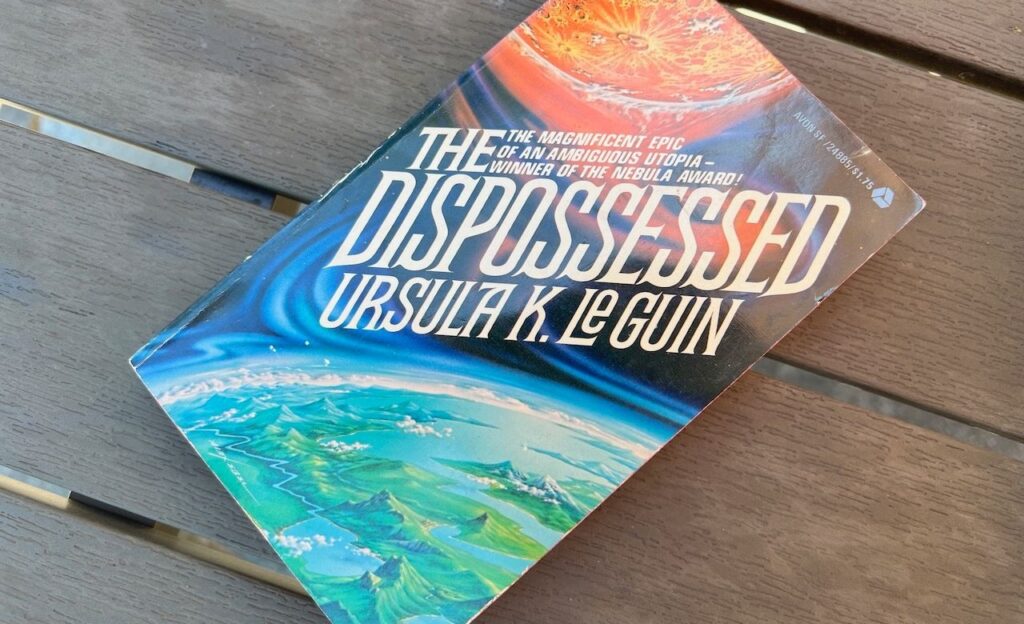
Set on the twin planets of Urras and Anarres, “The Dispossessed” focuses on Shevek, a physicist from the anarchic, barren world of Anarres. He travels to Urras, a planet divided into several states with different social and economic systems, with the hope of bridging the ideological gap between the two worlds.
The story is a profound exploration of anarchism, capitalism, and the notion of utopia. Like “The Left Hand of Darkness,” this book also received both the Hugo and Nebula awards, cementing Le Guin’s reputation as a writer who uses science fiction to explore complex social and philosophical issues.
6. The Word for World is Forest (1976)
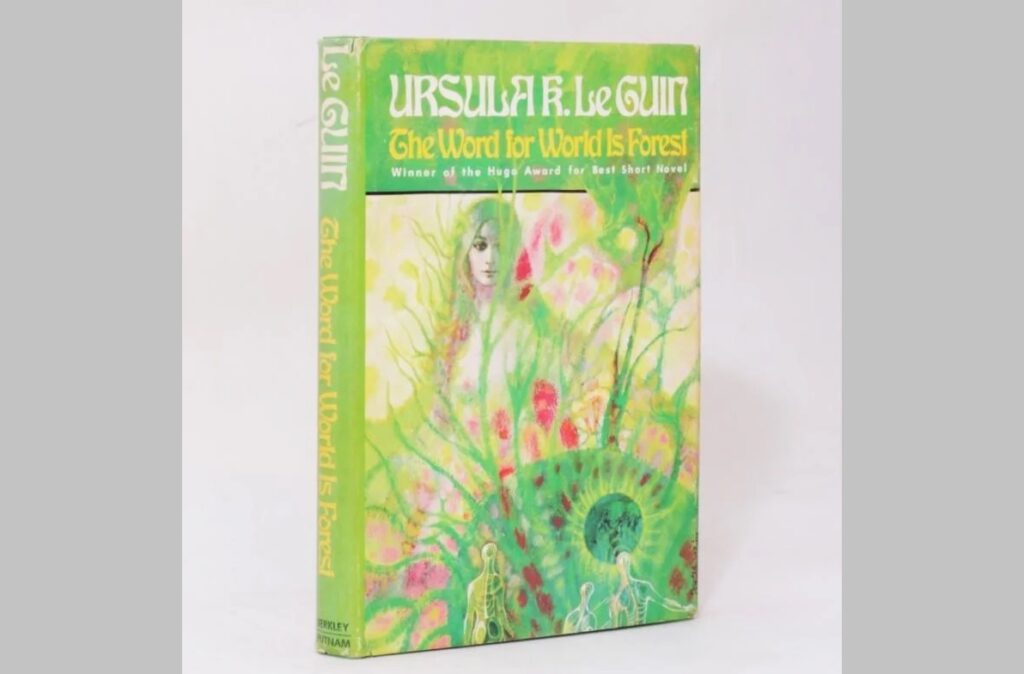
This novella takes place on the planet Athshe, which has been colonized by humans from Earth. The indigenous Athsheans are peaceful, forest-dwelling people who come into conflict with humans over the exploitation of their planet’s resources.
The story follows an Athshean named Selver who introduces the concept of war to his people as a means of resisting the human colonizers. The novella explores themes of colonialism, environmentalism, and the corrupting influence of power. It won the Hugo Award and stands as another example of Le Guin’s skill in crafting compelling stories around social issues.
These three works are not just stories; they serve as sociopolitical commentaries that use science fiction as a lens to explore human behavior and institutions. While each can be read independently, together they provide a rich tapestry of themes that make the Hainish Cycle an enduring work of literature.
7. Four Ways to Forgiveness (1995)
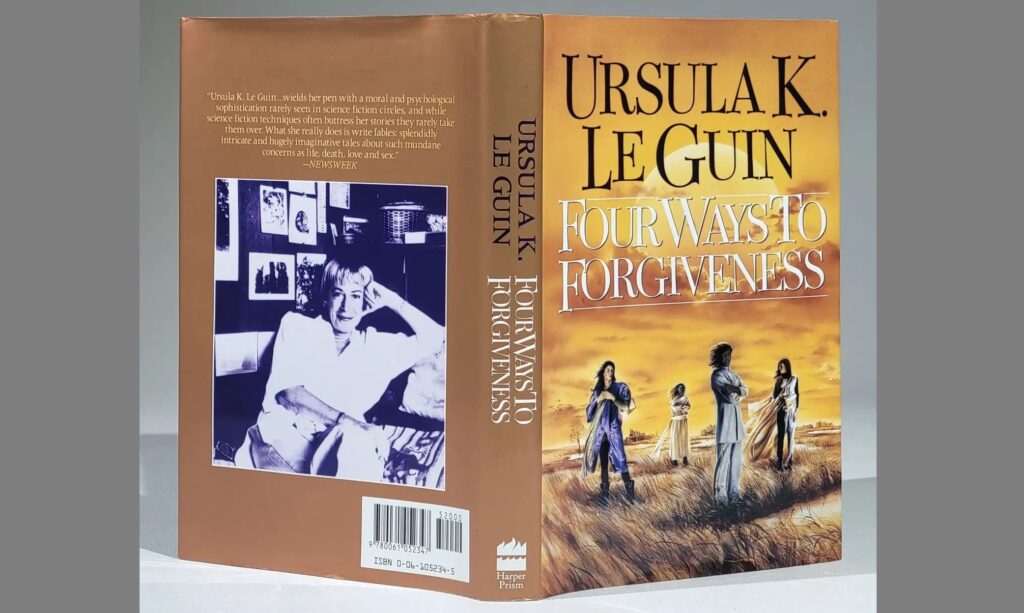
This entry is a collection of four interconnected novellas set in the Hainish universe, primarily focusing on the twin planets Werel and Yeowe. Both planets are grappling with the aftermath of slavery, revolution, and the ongoing struggle for equality and self-determination.
Quick Fact: Each of the four novellas takes us into the lives of different characters who are coping with these issues from varying perspectives. Gender roles, social inequities, and the path toward forgiveness and freedom are central themes here.
8. The Telling (2000)
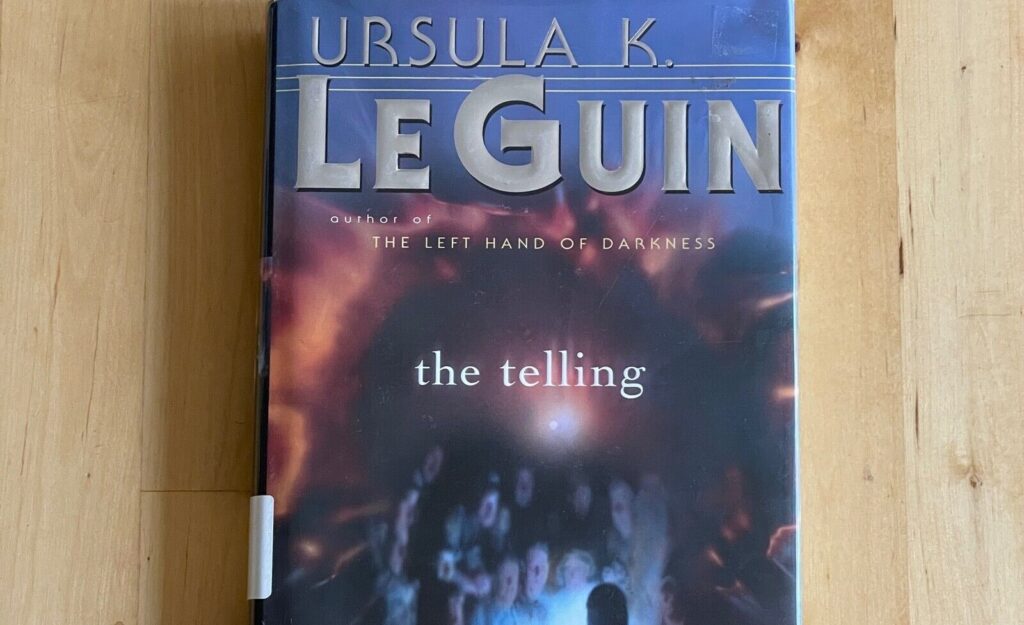
Set on the planet Aka, “The Telling” follows Sutty, an Earth-born anthropologist sent to study Akan culture. However, she arrives to find a society that has suppressed its own past in the name of progress and modernity.
The ancient tradition of “The Telling” a collective knowledge and spiritual practice is outlawed, and Sutty sets out to discover and preserve what remains of it. The book delves into themes of cultural erasure, authoritarianism, and the importance of history and tradition.
Optional Short Stories
- The Rule of Names (1964): This short story is a whimsical tale that plays with reader expectations and the conventions of names and identities. It has elements that would later become integral to the Hainish Cycle, such as the concept of the Ekumen.
- Winter’s King (1969): This short story is an accompaniment to “The Left Hand of Darkness” and provides additional insights into Gethenian culture and the reign of a new king.
- Vaster than Empires and More Slow (1971): This story takes place in a lush, seemingly uninhabited world explored by a mixed team of humans and aliens. As they try to understand the planet’s mysterious, plant-like life forms, they are forced to confront their own fears and neuroses.
The Hainish Cycle is more than a series of connected narratives; it’s a platform for exploring a wide array of sociopolitical and philosophical issues. Each work stands on its own merits but gains extra depth and resonance when read as part of the larger cycle.
Le Guin’s ability to weave intricate, thought-provoking tales around complex issues makes the Hainish Cycle an essential read for any science fiction aficionado.
The Hainish Cycle is a rich tapestry that often focuses on themes of social justice, tackling issues such as gender equality, colonization, and the dynamics of power and governance. For instance, “The Left Hand of Darkness” delves into the fluidity of gender and how societies construct gender roles, providing a critical lens through which to view our own preconceptions.
Similarly, “The Dispossessed” explores the dichotomy between anarchism and capitalism, questioning the concept of ‘utopia’ and how societies might strive for fairness and equality. It presents the idea that no single system is perfect but that each has elements that might contribute to a more just society.
These books serve as microcosms for broader social debates, making them incredibly relevant for readers interested in social justice themes.
Are the novels in the Hainish Cycle interconnected, or can they be read independently?
While the novels in the Hainish Cycle share the same universe, they can mostly be read as standalone stories. Each book typically focuses on a different planet and set of characters, although there are overarching elements, such as the Ekumen, that make appearances throughout the series.
For example, Genly Ai from “The Left Hand of Darkness” is an envoy from the Ekumen, which is also mentioned in other books like “The Dispossessed.” The real connection comes through the themes and philosophical questions posed, which gain greater depth when read in the context of the entire series.
How does Ursula K. Le Guin integrate elements of both science fiction and fantasy into the Hainish Cycle?
Ursula K. Le Guin seamlessly combines science fiction and fantasy elements in her Hainish Cycle. Take “Rocannon’s World,” for instance, where Rocannon encounters not just technologically advanced civilizations but also mythical creatures reminiscent of fantasy lore.
Expert Tip: The science fiction elements often come in the form of space travel, advanced technology, and the depiction of various forms of governance and society. Meanwhile, the fantasy elements are seen in the unique cultures, languages, and sometimes even magical or mystical aspects of the worlds she creates.
This blend allows Le Guin to explore a wide array of themes and settings, making her work accessible to fans of both genres.
How relevant are the themes of the Hainish Cycle to contemporary issues?
The themes of the Hainish Cycle are strikingly relevant to a range of contemporary issues. For example, “The Word for World is Forest” confronts issues of colonization and environmental exploitation that resonate strongly with ongoing debates about climate change and indigenous rights.
“The Telling” delves into the dangers of cultural erasure and authoritarianism, topics that are increasingly pertinent in today’s globalized yet politically polarized world. Le Guin’s focus on themes like social justice, gender equality, and governance makes these books not just captivating reads but also important cultural commentaries.
What kind of awards and recognitions have Ursula K. Le Guin’s Hainish Cycle received?
The Hainish Cycle has received multiple prestigious awards that underline its importance in the science fiction genre. Both “The Left Hand of Darkness” and “The Dispossessed” have won the Hugo and Nebula awards, two of the most esteemed awards in science fiction literature. “The Word for World is Forest” also won the Hugo.
These accolades not only validate the series’ quality and impact but also make it one of the most critically acclaimed in the genre. These awards signify that the Hainish Cycle is not just popular but also respected for its intellectual depth and narrative craft.
Are there any supplementary materials or adaptations available for the Hainish Cycle?
There hasn’t been any official film or television adaptation of the Hainish Cycle. However, many of the books have been re-released in newer editions with forewords, afterwords, and appendices that provide additional context and insights into the stories.
Some of the books and stories have also been included in anthologies and special editions, often alongside other works by Ursula K. Le Guin or selected for their thematic relevance.
How accessible are Ursula K. Le Guin’s Hainish Cycle books for new readers of science fiction?
One of the great strengths of the Hainish Cycle is its accessibility. Because each book often focuses on a different world with its own unique culture and social structure, new readers can easily dive into any book without feeling lost.
Le Guin’s storytelling is often straightforward, focusing on character-driven plots and ethical dilemmas that don’t require an extensive background in science fiction tropes. Additionally, the themes she explores like gender, politics, and ethics are universal, making them relatable to a broad audience.
Whether you’re a seasoned science fiction reader or a newcomer to the genre, the Hainish Cycle offers a deeply satisfying and intellectually stimulating experience.
How does Ursula K. Le Guin use language and dialogue to portray diverse cultures in the Hainish Cycle?
One of the standout features of the Hainish Cycle is the way Le Guin uses language as a tool to construct and delve into diverse cultures. She often develops unique linguistic characteristics and even dialects for the various races and societies portrayed in her books.
This is not just a stylistic choice but also serves a functional purpose: it emphasizes the importance of language in shaping thought and culture. The manner in which characters speak, the idioms they use, and the ways they convey meaning all help to bring the worlds of the Hainish Cycle to vivid life.
Language becomes a vehicle for exploring larger themes, such as the relationship between language and thought, as seen in works like “The Dispossessed.”
What is the role of technology in the Hainish Cycle?
In the Hainish Cycle, technology often serves as a double-edged sword, offering both advancements and ethical dilemmas. While technological progress is generally seen as a means to better the conditions of life, Le Guin is careful to show the flip side, where technology can lead to dehumanization, exploitation, or cultural erosion.
For instance, the Ansible, a device that allows for faster-than-light communication, is portrayed as both a boon and a potential means of exerting control. By examining the moral and social implications of technology, Le Guin pushes readers to think critically about our own relationship with technological progress.
Le Guin’s characters are richly drawn and multi-dimensional, displaying a wide range of human emotions and complexities. Whether it’s the sense of isolation felt by Genly Ai in “The Left Hand of Darkness” or the ideological struggles faced by Shevek in “The Dispossessed,” emotions are portrayed in a nuanced manner.
This allows the author to delve into intricate emotional landscapes that resonate deeply with readers
Expert Tip: . Emotional conflicts often mirror larger societal issues, serving as microcosms for the worlds Le Guin creates. Her adept handling of human emotions makes the sociopolitical themes of her books even more impactful.
What kinds of philosophical questions does the Hainish Cycle raise?
The Hainish Cycle engages readers with a variety of philosophical questions ranging from the nature of utopia to the ethical implications of colonization. Le Guin often uses her fictional worlds to explore complex issues such as freedom, identity, and the nature of morality.
These aren’t abstract debates but are deeply embedded in the plot and character arcs, making them not just intellectual exercises but integral to the emotional core of the stories. Readers are encouraged to engage with these questions as they navigate through the narrative, making the experience both entertaining and thought-provoking.
Are there recurring motifs or symbols that Le Guin employs throughout the series?
Throughout the series, Le Guin often uses recurring motifs like journeying, duality (such as twin planets or dual-gendered individuals), and the concept of balance. These motifs serve to tie together the disparate elements of the Hainish Cycle, creating a sense of unity across different books and stories.
For instance, the idea of balance is often explored in various dimensions gender balance in “The Left Hand of Darkness,” socio-political balance in “The Dispossessed,” and ecological balance in “The Word for World is Forest.” These motifs add a layer of thematic consistency that enriches the Hainish Cycle as a whole.
How does Le Guin approach the concept of leadership and governance across different societies in the Hainish Cycle?
Leadership and governance are topics that receive substantial attention in the Hainish Cycle. Le Guin explores a wide variety of governance models, from the anarcho-syndicalist society of Anarres in “The Dispossessed” to the monarchical systems in “The Left Hand of Darkness.”
These varying models serve as experimental grounds for discussing the strengths and weaknesses of different forms of governance. By presenting these systems through the eyes of characters who are often outsiders, Le Guin encourages readers to critically assess the qualities that make for fair and effective governance.
How does the series reflect Ursula K. Le Guin’s personal beliefs and philosophies?
Le Guin was known for her feminist beliefs, Taoist philosophy, and strong views on social justice, which are readily apparent in the Hainish Cycle.
From the exploration of gender fluidity in “The Left Hand of Darkness” to the critique of colonialism in “The Word for World is Forest,” the series often serves as a literary canvas upon which Le Guin paints her social and philosophical ideals. While the books explore various perspectives, they often reflect her commitment to examining alternative social models, questioning established norms, and fostering a spirit of empathy and understanding.
Conclusion
Ursula K. Le Guin’s Hainish Cycle isn’t just a series of science fiction novels; it’s a comprehensive exploration of human society, ethics, and the vast range of possibilities that speculative fiction allows us to consider.
Whether you’re drawn to the series for its intricate plotting, its philosophical depth, or its sociopolitical commentary, there’s no denying its lasting impact on both the genre and its readers.
Each book serves as a lens through which we can examine our own world, making the Hainish Cycle not just a compelling read, but also a toolkit for understanding the complexities of human nature and society.
